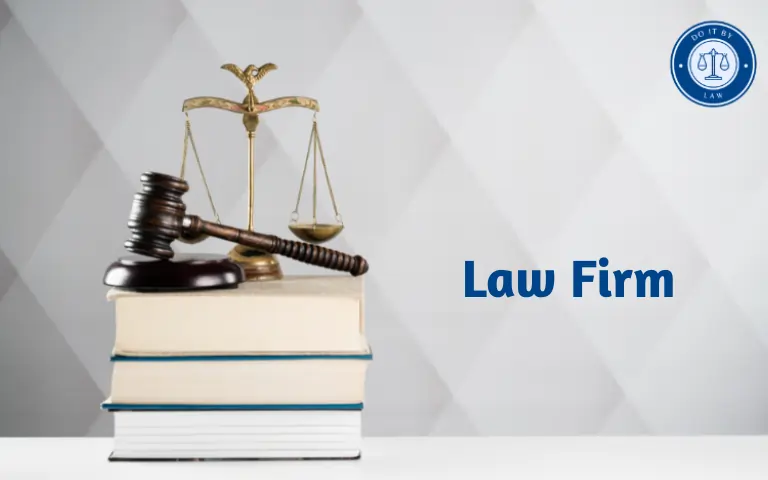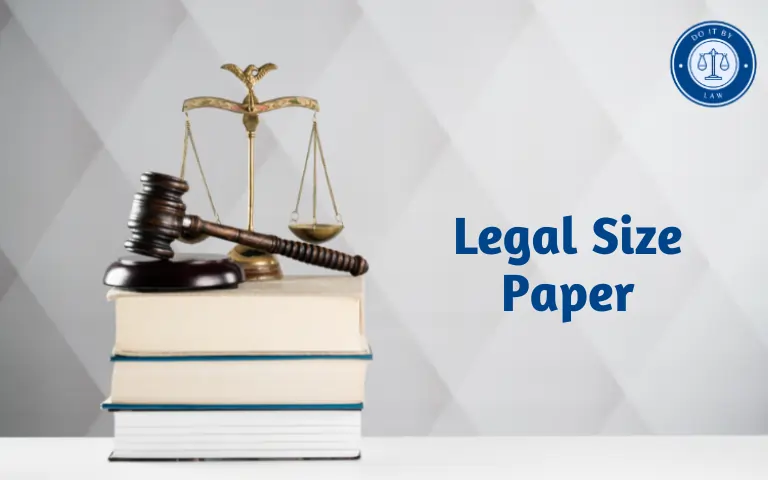What is Case Law? A Simple Explanation
Case law refers to the entire collection of published legal decisions made by local, state, and federal courts over time that interpret how existing statutes and regulations apply to particular legal disputes.
These past rulings on specific cases then serve as precedents that can guide judges in making future decisions in similar cases. So case law develops incrementally based on the accumulation of myriad court judgments.
Unlike deliberately enacted statutes or codified regulations, case law evolves more organically on a case-by-case basis as various courts apply current laws to emerging conflicts and controversies. The precedents set then become part of established case law.
How Does Case Law Develop Through Court Decisions?
Whenever a judge issues a ruling explaining their legal reasoning on a case, that decision gets recorded and published for reference. If the decision interprets how an existing law applies in new circumstances, it adds incremental precedent to the body of case law.
For example, if no clear statute governs how ridesharing services should be regulated, the first court judgment would advance novel case law. Future ridesharing cases can then cite that precedent.
Over time, these individual case decisions on various legal gray areas accumulate to form extensive case law clarifying open questions. So case law expands via the gradual precedent-setting outcomes of many court rulings.
Why is Case Law Important?
This growing body of case law performs several crucial functions within legal systems:
- Fills gaps – Case law precedents address areas of ambiguity not covered expressly by enacted laws.
- Offers interpretations – Court rulings interpret how codified laws apply to real-world situations that lawmakers may not have anticipated.
- Provides consistency – Following established case precedent promotes consistent rulings on recurring issues over time across the judiciary.
- Shapes standards – Case law collectively delineates the standards and tests judges use to evaluate cases based on accumulated wisdom of prior decisions.
In essence, case law guides judges to make sound rulings aligned with the reasoning of fellow judges facing analogous cases under current statutes. This consistency and stability is key for legal fairness and predictability.
What is Binding vs Persuasive Precedent in Case Law?
There are two main types of precedent in case law:
Binding Precedent: These cases must be followed by lower courts within the same jurisdiction. For example, U.S. Supreme Court decisions on federal law bind all lower federal courts. State supreme court rulings bind respective state courts.
Persuasive Precedent: These cases are not mandatory but should still be given weight by judges. For instance, precedents from sister state courts or lateral federal circuits can be persuasive but non-binding in other jurisdictions.
So higher courts generate binding case law on lower courts in their hierarchies. Outside jurisdictions may establish a persuasive precedent that provides influential guidance but grants wider discretion to depart from those rulings.
What’s the Difference Between Case Law and Statutory Law?
Case law differs substantially from codified statutory or regulatory law:
- Statutory law consists of the formal legislation and regulations enacted by legislative bodies and regulatory agencies. Statutes are proactively created through political processes to establish positive legal policies.
- Case law originates from court rulings interpreting how existing statutes apply. It arises reactively from disputes working through the judicial system rather than legislative proclamation.
So statutory law actively sets direct mandates, while case law clarifies how those mandates should be applied when legal uncertainties arise that statutes did not explicitly account for. The two work together to make the law functional.
What Are Some Key Examples of Impactful Case Law?
Many monumental Supreme Court and lower court opinions have established widely influential case law over America’s history. Some landmark cases include:
- Roe v. Wade – Established case law on abortion rights is still referenced in debates today.
- Citizens United – Its case law enabled unlimited independent political expenditures by corporations based on free speech protections.
- Brown v. Board of Education – Its desegregation case law overturned the “separate but equal” doctrine that had stood for decades.
- Miranda v. Arizona – Its reading of 5th Amendment rights created the famous “Miranda warning” police must issue before suspect interrogations.
These cases and countless more built up pivotal bodies of case law dictating policies, interpretations, and legal tests used extensively across the system.
Are There Any Limits on Case Law Authority?
While case law serves as the common law foundation for many legal questions, it does face some inherent constraints:
- Can be Overturned: Higher reviewing courts can always revisit and overturn prior problematic case law by issuing new binding decisions.
- Applies Narrowly: The specific factual details involved in cases limit how broadly applicable their precedents reach to somewhat different scenarios.
- Hard to Research: The sheer volume of case law makes identifying the most relevant precedents challenging without sophisticated legal research skills and resources.
- Not Absolute: Statutory laws passed by legislatures ultimately hold more direct democratic authority than evolving common law standards alone.
So case law provides critical guidance but generally works best alongside codified statutes rather than wholly independently. Combining binding legislation with flexible case-based precedent allows legal systems to balance consistency with adaptability.
What Are the Key Elements of Case Law?
When trying to understand case law, it helps to recognize its core components. Precedent-setting published case law opinions generally contain:
- Key facts – The factual background, context, and circumstances underlying the dispute.
- Procedural history – The path the legal controversy took through lower courts leading up to the present ruling.
- Legal question – The unsettled interpretation or ambiguity around existing law that the ruling aims to address.
- Reasoning – The judge’s detailed legal analysis supports their conclusion based on current statutes, regulations, and precedents.
- Holding – The ultimate judgment and resolution in the instant case.
- Dicta – Commentary offering additional perspectives, though not essential to the judgment.
These elements come together to demonstrate how and why the court applied current legal rules to produce its judgment extending case law.
How are Case Law Precedents Applied?
Case law carries the most direct weight as binding precedent on courts subordinate to the court that made the prior ruling in the same jurisdiction:
- For example, a case decision from the U.S. Supreme Court would bind all lower federal courts nationwide to follow its precedential reasoning under a principle known as stare decisis.
- However separate state court systems are not strictly bound to U.S. Supreme Court precedents on state legal matters. Though they may still reference federal rulings as influential case law perspectives.
The further removed courts are in hierarchy or geography, the more flexibility judges have to interpret whether precedents directly control the cases before them. But even non-binding case law carries influential value through its persuasive reasoning.
Over time, as many courts across multiple jurisdictions reinforce shared case law standards, it gains broader binding force through mutual reinforcement. This cumulative consensus carries more weight than isolated rulings.
Why Can Case Laws Change Over Time?
If case law arises from courts’ contemporary interpretations of current statutes, why does precedent evolve rather than remain fixed? There are a few key reasons:
- Shifting laws – Legislative amendments alter the underlying statutory landscape, necessitating updated application through case law.
- Novel technologies – Legal questions surrounding innovations like AI require modernizing case law.
- Evolving norms – Prevailing social values influence legal reasoning in areas like privacy and civil rights.
- Cross-jurisdiction tension – Contradictory state and federal precedents create conflicting case law needing ultimate resolution.
So while case law intrinsically shapes itself to align with written law, changing contexts and emerging disagreements between courts still enable precedents to shift over time. Room for reasoned debate exists within case law.
Why Can Case Laws Sometimes Seem Contradictory?
Since any court can in theory issue a judgement that incrementally molds case law on a given matter, divergent precedents can emerge across jurisdictions:
- For example, different federal circuit appeals courts with jurisdiction over different regions may develop contradictory case law standards on the same federal issue. This creates a circuit split needing ultimate Supreme Court reconciliation.
- Similarly, different state supreme courts can adopt conflicting interpretations of constitutional protections or other laws until harmonization occurs.
Until consensus ultimately develops through appeals mechanisms, case law can temporarily fracture across jurisdictional lines. However, the overarching system still works to organically resolve edge inconsistencies over time while leaving space for reasoned dissent.
Frequently Asked Questions About Case Laws
Conclusion
In summary, case law refers to the vast accumulation of published court judgments handed down over centuries that collectively guide judicial thinking on applying current laws. The precedent promotes consistency but still allows reasoned flexibility and evolution in the law. Understanding how case law fits into interpreting codified rules can aid both legal experts and ordinary citizens subjected to its influence.
While key statutes may proclaim unambiguous rules, the actual business of judging requires courts to regularly revisit how to best apply those rules fairly as society changes. Case law offers the wisdom of that ongoing process case by case.



